Over a year in the planning, our 3-week trip to Nepal and India – conceived as a way to celebrate my 50th birthday and Aviv’s bar mitzvah – went off without nary a hitch. Other than some unseasonably bad weather and a few dashed expectations, the trip was so unbelievably beautiful (as well as physically challenging) that it’s hard to summarize in a relatively short space. But in order to satisfy the questions we’ve already received, and to preempt those still to be asked, I will nonetheless try my best. I’ve divided up this report into themes for those of you who want to skim. The bottom line: it was truly a trip of a lifetime!
Spectacular scenery
First of all: the scenery. After seeing innumerable pictures, we figured there was no way that the real thing could live up its promise. It did. The incredible vistas that stretched for kilometers; the gorgeous terraced fields growing rice and wheat surrounded by those snow-covered mountains with peaks over 8,000 meters; the medieval villages filled with chickens, water buffalo and the occasional yak-cow hybrid (I nicknamed them “caks” or, better, “yows”); not to mention the villagers in their colorful clothes that were not being worn in some calculated display for naive tourists – it was all like being in a fairy tale that stretched on for 11 eye-popping days. And that doesn’t even cover the 6 nights we spent in the fascinating, hectic and desperately polluted Kathmandu.
Two-part trek: forests down below, alpine landscape at higher elevation
The trek we did was divided into two main parts: the lower hills which are green and filled with thick forests, often with beautiful rhododendron flowers, and the aforementioned terraced hills; and the alpine region in the higher altitudes which resembles the hills around Eilat in Israel, but with enormous snow-covered mountains encircling the valley. Also, unlike Israel, there are three medieval “oasis” towns (Kagbeni, Jharkot and Muktinath), which appear out of nowhere, and are part of a pilgrimage path for Buddhists and Hindus (although these days, most of the pilgrims travel by jeep!)
I found the Alpine landscape the more stunning, but this may have been because we had clear views. During the first half of our trip, we were beset by rain nearly every day (our trekking agency said we’d get rained on 1-2 days max during April, the time of the year we went, but global warming seems to have changed the meteorological mix). The rain both made the days and nights colder and, sadly, obscured the mountain views (although our mornings were uniformly clear and stupendous). September/October is prime trekking season when the skies are always blue, although I’ve been told the nights aren’t any warmer.
Best part of the trip
Although the scenery was spectacular, the high point of the trip was probably that we spent 3 weeks together as a family (including 3 meals every day) – and we didn’t kill each other. This was aided by the fact that there was no Internet in the mountains. Other than when Amir found a free WiFi zone in Jomsom, there was no opportunity to check email or Facebook. Indeed, I was cut off from the news for the entire time – not an easy feat for this online junkie. And it was wonderful! I didn’t think about work or even about friends (sorry, guys); I was totally “in the moment” for much of the trip. Psychologists: consider recommending your patients take a trek – it can save hours of therapy.
Tough conditions: freezing cold, no heat or insulation
For those considering a trek to Nepal, you have to balance out the mind-boggling scenery with some very tough conditions. We did OK on the hiking itself – many of our days were short (4 hours of walking) and since we were a private group with our own guide, we took many breaks. It was the accommodations that got us.
The Annapurna region is dotted with “tea houses,” which are essentially flimsy “Motel 6’s” with outdoor corridors between rooms and a shared bathroom at the end (more often than not a squatter). These hotels seem to have been thrown up in a hasty attempt to capitalize on the trekker trade. Walls are no more than plywood and windows (if they aren’t broken) have substantial gaps in the seal. Temperatures in the mountains can get very cold at night – approaching 0 Celsius in the higher elevations – and the rooms offer no insulation (and certainly no heat). The result was the experience of camping outdoors, albeit with a bed (the thinnest mattress imaginable – it makes an Israeli field school look like a 5-star palace). We hunkered down in sleeping bags, with 1-2 blankets on top and multiple layers of clothing.
Add on top of this the need to do laundry every day or two (given the cold conditions, our underwear and socks never seemed to dry fully) and the scant hot water in the showers (we had to use a bucket of boiled water twice to clean up) and, by the final days of the trek, we were torn – we didn’t want our vacation to end, and at the same time we ready to get back to civilization.
There are more “upscale” rooms with an attached bath and shower, and our guide tried his best to use his connections to score us these digs (we actually got them 5 out of our 11 nights), but even in these “luxury” rooms, the toilets were clogged and the floors were invariably flooded. Note to travelers: bring Crocs.
Fabulous food
On the more positive side, the food was truly fabulous. We ate exclusively vegetarian. Our mainstay was garlic soup, which is supposed to help with altitude issues; we ordered it at least two times a day. The menus are standardized across the route and cater more to Westerners than the locals, so you have the same mix of “potato roasty” (a potato crust covered with yak cheese), momos (see below), chow mien or fried noodles, pizza, and the ever-present “dahl bat.”
Dahl bat is served on a circular metal plate (like an Indian thali) with a generous scoop of white rice in the middle, and several small silver bowls around the sides containing dahl – aka lentil soup (which you mix with the rice), curried vegetables (usually potatoes and cauliflower), spinach greens, a spicy pickle sauce, and crispy lentil bread. The best part: unlimited re-fills. Many native Nepalese eat nothing but dahl bat, twice a day, for their entire lives. The cost – a paltry NIS 7.5 (about $2) a plate.
In addition to the dahl bat, at every stop, we ordered “hot lemon with ginger” – not tea but freshly squeezed lemon and ginger mixed with boiling water.
Even though we stopped to eat three times a day, we still got hungry along the way. A plentiful supply of various bars – Cliff, candy, granola, and Lara – kept us stoked for when that mid-morning sugar and carb calling came knocking.
Paying up front
On the trek, we didn’t have to worry about money. We paid our trekking agency – Friends in High Places – in advance and our guide found the accommodations and took care of all the meals. You can save money by going ala carte, but I highly recommend the “all in” plan – it’s much less stress to be able to order as much as you want for meals. Want a dessert of apple fritters (fried) or apple pie (also fried, like at McDonald’s – did I mention there’s a lot of frying going on in the mountains?) – it’s all included.
The same went for the entire trip – we were met at the airport by our trekking agency; our hotel in Kathmandu was all paid for; flights within Nepal were covered (see our itinerary below); we even had included day trips with transportation and guide. If you have time, you can make like an Israeli – just show up at the “Swissa” travel agency that caters almost exclusively to Israelis, and book a guide and a route on the spot. If your vacation is less open ended, though, pay up front.
Some trekkers go solo or just with a porter who carries your bags and knows the route, but I’d advise you to hire a guide. Our guy – Pasang – was just fantastic. Not only did he find us the best places to stay, he worked in the kitchen (where he often served as our personal waiter), and he was right there the time when I slipped down a tree trunk (and flipped over – ouch!) Whether you take a guide or not, you really need someone to show you the way – the trails are not color coded and marked like in Israel.
Pasang also had his ever-present cell phone with him at all times (an iPhone by the way) which led to one of the more interesting surprises. I’d imagined that we’d be completely disconnected in nature – you’d show up to the first tea house and grab the best available rooms. Instead, the entire Annapurna region has cell phone reception. Pasang called ahead to reserve our rooms, the porters would run ahead and by the time we’d arrive, our bags were already waiting. In addition, at about 11:00 AM each morning, he’d ask us if we were ready to order lunch, which he’d then call in. This was actually pretty important: many of the teahouses have only 1-2 gas burners, so it can take a while to get your food.
Don’t feel guilty about porters
Before the trek, Merav had expressed her concern about traveling with porters who would schlep our heavy bags. It was uncomfortable, exploitative at worst, she said. Don’t feel guilty. Our porters seemed to enjoy the whole trip and became part of our extended Himalayan family. They got paid (well, by Nepalese standards) and didn’t suffer terribly from the 20-30 kg they carried on their backs (or at least they didn’t complain).
A physical challenge
Physically, the trek was quite a challenge. Jody and I pride ourselves on being in good shape (we both run and exercise regularly), but we were usually pulling up the rear, with our teenagers bounding ahead. The terrain – at least in the first part of the hike – is mostly up and down 900-year-old stone steps and the incessant climb was tough – especially as we got to higher altitudes where I was gasping for breath. On our day from Gandrung to Ghorepani (see below), we ascended about 400 meters in the morning, then lost it all with a similar descent, which we had to make up in the afternoon: the total climb that day was about 1,000 meters.
But we did it – fulfilling a key goal I set out when I said I wanted to hike in Nepal for my 50th birthday “while I still could.”
Shabbat in the mountains
Our hike totaled 11 days, but 2 of those were Shabbat, which we took full advantage of, resting and sleeping in. We ate in the common dining hall and explained the rituals to the other trekkers in attendance. We ordered soft chapattis for our challah and mango juice for Kiddush.
Israelis
We expected to see Israelis throughout the trek. So we were surprised not to meet a single Sabra until the 6th day of our hike when we were besieged by a group of 15 bicyclists who had just arrived in Tatopani from Marpha (see my previous story for details). They were on a tour organized by an Israeli-Nepali joint venture, ElNepal.co.il, and were having a grand time. We bathed together in the hot springs and they flew home with us on the same plane. Once we got to the Seder in Kathmandu, of course (see below), there was no shortage of Israelis.
Health
While there were some upset stomachs from too much spicy food, for the most part we stayed healthy by avoiding local water and uncooked vegetables. Our constant companion on the water front was a “SteriPen,” a device which uses a UV light to destroy the DNA of the microbes in the water: you still drink them but they can’t reproduce. Every night, we SteriPen’d 5-10 one-liter bottles of water, to the amusement of our porters and other guests (if they knew how much money we were saving by not buying bottled water, they might not have laughed so hard).
Another health-related tip: bring lots of toilet paper. There aint any in the mountains. If you run out, you can buy on the trail but it’s much more expensive.
Kathmandu
While the trek was the focus of the trip, we also spent quite a bit of time in the capital city of Kathmandu. There were once three kingdoms in the small Kathmandu valley and each tried to one up each other with religious sites – temples, “stupas,” prayer wheels, temples and pagodas. We traveled to all of them – Kathmandu, Patan and Bhaktapur – as well as the cremation “ghats” of Pashupatinath, and Swayambhu (aka the “monkey temple” – not so many monkeys, but the highest spot in the valley).
In Kathmandu’s Durbar Square, we learned about the Living Goddess – a real live “deity’ in the form of an 8-12 year old girl (she is replaced when she gets her first period). During the time she’s a goddess, she lives in a special palace where her feet never touch the ground.
But Kathmandu is also dirty and, with a population of 3 million, suffers from extreme power shortages. Indeed, there is consistent government-supplied electricity only 7 hours a day. Hotels post a grid of when they’ll have power (the rolling blackouts are scheduled). When the electricity is out, it’s either pitch black or the hotel switches on a generator. Indeed, the main difference between a 2-star hotel (like the Tibet Guest House where we stayed) and a 5-star one seems to be the size of the generator. Even if your hotel has air conditioning (which ours did), it will go out at night when the power is cut. I never ventured outside without my head lamp.
Now, I may be sounding like a spoiled Westerner, but after two weeks on trek, we were in dire need of a little pampering. On our final day before departure, we booked massages. Bad idea. They were among the most painful experiences of our lives. Our masseuses were tiny, but boy could they pack some power into a simple shiatsu.
Tooling around Thamel
The area in which we stayed in Kathmandu is called Thamel – it’s a backpacker’s heaven and is filled with hundreds of shops selling discount trekking gear –, fleeces, sleeping bags, rain ponchos. It’s also all fake. Nearly everything you buy has a “North Face label,” but it’s not. The zippers on the sleeping bags will be toast mid-way through the trek. Other items of clothing will rip or otherwise fall apart. One day, we actually passed a shop selling fake North Face labels. There was a big sign on the window reading “no photographs.” No surprise there.
On the other hand, Thamel does have some very good restaurants including one that we just stumbled across called Green Organic, which makes its own bread and even serves tofu. I ordered a “paneer pizza” which was to die for. We also enjoyed several varieties of “momo” – a Chinese-style steamed or fried dumpling which is Tibetan in origin but now a Nepali staple, second only to dahl bat.
The “largest Seder in the world”
We organized our trek to conclude at what’s billed as the “largest Passover Seder in the world” hosted by the local Chabad. There were more than 1,000 participants – nearly all young, tie died, dreadlocked and multiple pierced Israelis – in a luxurious dining room at the Yak and Yeti Hotel. Chabad tries hard – I’ll give that to them – but I am sad to report that not only was it the largest, it was probably the most disappointing Seder we’ve attended. The rabbi’s intention is not to make it meaningful but to yotzei all 1,000 attendees. That is, as long as they’ve “heard” the entire Haggadah, they’ll have fulfilled the mitzvah.
The practical result: it was like a Haggadah “Greatest Hits” album. The rabbi speed read through the maggid (reaching the meal in less than 50 minutes). while pausing only for the popular songs (Ma Nishtana, Dayenu). For the otherwise bored Israelis (at least those who weren’t chain smoking in the lobby or recording the entire event on video – now there’s a tolerant Orthodox rabbi!), the most exciting moment was a lottery in which, amazingly, Jody won the top prize – a free bungie jump from the tallest bridge in the world. But, at 4 hours away from Kathmandu and, given we had only one day left on our vacation, we had to return the prize back to the pot (not that Jody would have done it anyway).
Then there was the food. We weren’t expecting much, but the result was even less. The chicken soup consisted of about an eighth of a bowl. There was only one plate of 7 bite-sized chicken nuggets – and we were 9 at the table. We filled up on tasteless shmura matza and mayonnaise and oil infused salads.
Starting point: Shabbat in Mumbai
I won’t go into detail here about the weekend layover we had in India. We spent a pleasant Shabbat in Mumbai, also with Chabad, who were much more organized than their Nepalese cohorts (there was real chicken, albeit still cold from the freezer).
Most exciting: Aviv had his first aliyah to the Torah in Mumbai. Aviv had already had his formal bar mitzvah in Jerusalem reading from the Megillah on Purim, but this was the first time he was called up to the bima. Cool.
Add another week to go through all the pictures!
After three weeks on the road, the trip wasn’t quite over. Now it was time to go through the 2,700 pictures we took (from three cameras – mine, Merav’s and Aviv’s). I’ve distilled that down to 400 or so, which I’ve posted to Picasa and Facebook. If you want to take a look – send me a note and I’ll forward you the Picasa ink. Or become my friend at www.facebook.com/brianfrombaka.
If you’re interested in going – I’m glad to share more insights than in this “brief” treatise. You can also contact John Child at Friends in High Places who will be glad to plan a complete itinerary for you.
——————————————————-
Appendix: Details on our route (read if you’re thinking of going)
For those of you who are familiar with the Annapurna region of Nepal, here’s a quick summary of the route we took. We hiked several well-known routes along with a connecting piece done in reverse. From Kathmandu, we took a 25-minute flight to Pokhara and drove to our starting point of Phedi. From there we hiked the route towards the Annapurna Base Camp, but turned west at Landrung towards Gandrung (up a 500 meter hill), then continued to Ghorepani (where Poon Hill is located). We were originally supposed to spend the night at Tadapani but continued on to Deurali in order to be able to see the view at Gurun Hill, which is similar (though not as spectacular) to Poon Hill.
From Ghorepani, we trekked down to the hot springs of Tatopani where we rented a jeep (more like a flat bed truck) to drive to Jomsom and Kagbeni. We finished our trek with a 2-day round trip hike and jeep ride to Muktinath, then flew back to Pokhara from Jomsom and drove in a private van back to Kathmandu (long, hot, beautiful). The guide books all say to hike the other way –from Jomsom to Tatopani – but a road built in the last 5 years has essentially ruined what was the “classic” Annapurna trek; hikers get dust blown in their faces every 5 minutes by the ever present jeeps and public buses. That happened during our Kagbeni/Muktinath trek too, but it was relatively short in comparison.
Favorite stops
My favorite stops were the Gurung village of Gandrung, where we spent Shabbat (see picture above); Ghorepani, where our teahouse had a large common area with a big wood burning stove – it reminded me of a Swiss ski lodge; the village of Marpha which is famous for its apple pie (it was truly the best we’ve ever eaten); and the natural hot springs at Tatopani. Amir and Aviv reported that their highlight was Poon Hill which, at 3,250 meters, is famous for having “the best view in the world.” With a departure time of 4:00 AM to catch the sunrise, and a rapid 400-meter climb, the rest of us slept in.



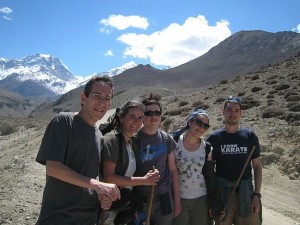
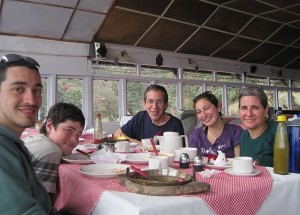
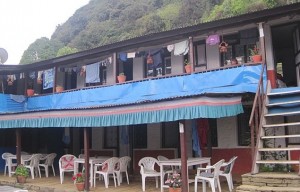
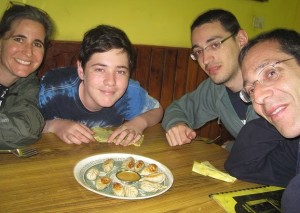
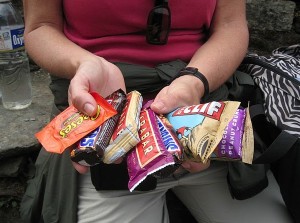
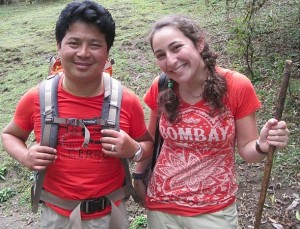
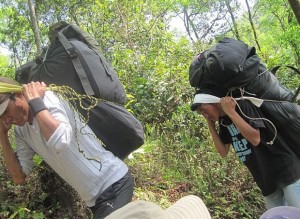
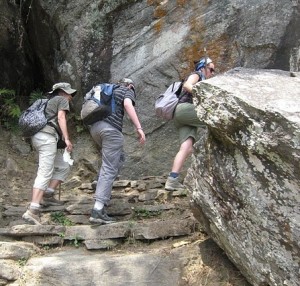


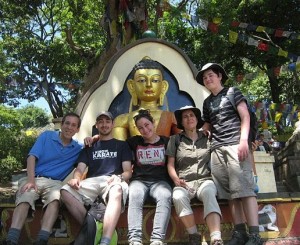
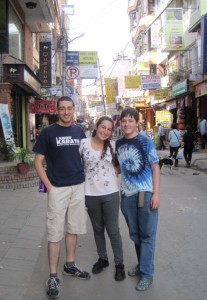
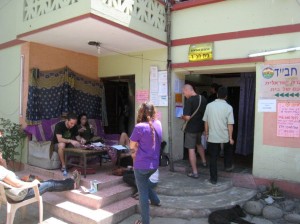
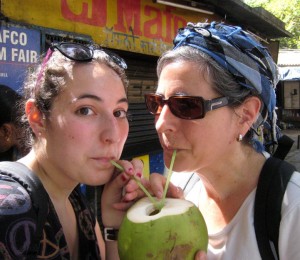
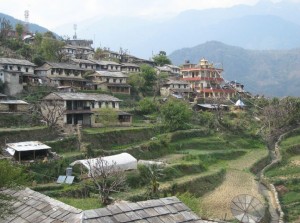
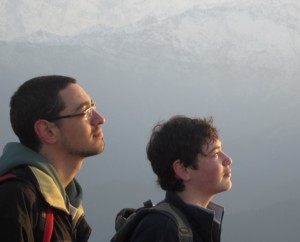
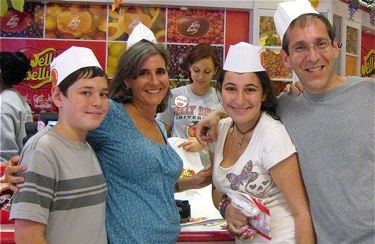

{ 4 trackbacks }